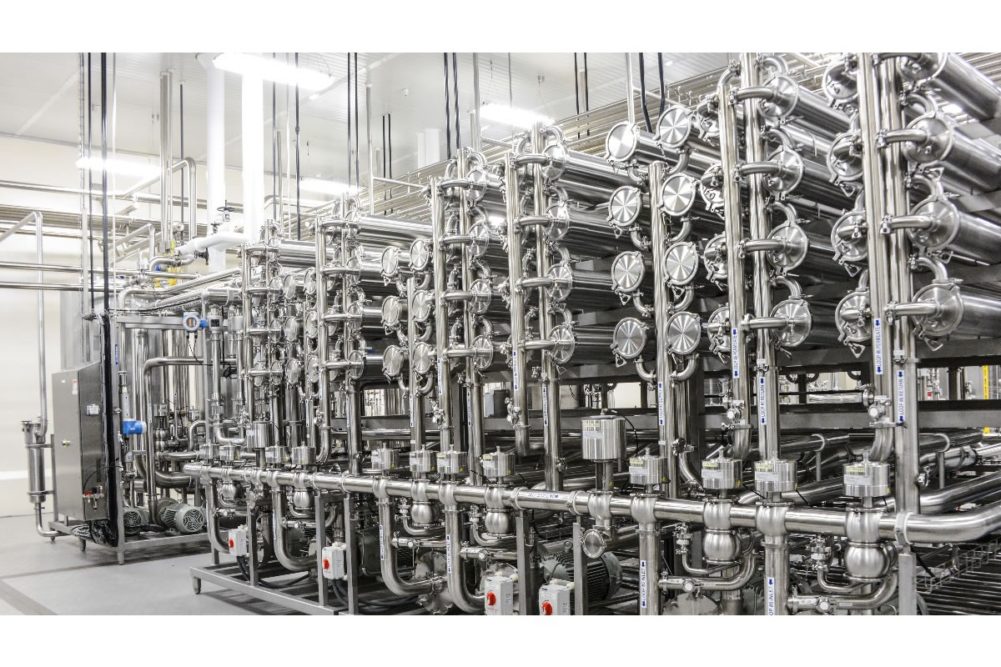Proper filtration is essential in the dairy industry to ensure the highest quality milk and a superior product for consumers.
When contaminants make their way through the production line, the final product may be lost. Because of this, membranes are one of the first lines of defense in dairy product processing.
Membrane filtration is used for processes such as bacteria and fat reduction, milk protein fractionation and casein standardization. This process also plays a crucial role in reducing or eliminating lactose and brining cheeses.
Since the introduction of membrane processing to the dairy industry in the late 1960s, separation of dairy fluids using semi-permeable membranes has been used to clarify, concentrate and fractionate a variety of dairy products. Additionally, the applications use for whey processing have introduced new uses for uses for a once wasted by-product of cheese making.
Variety of processes
In membrane filtration processing, a liquid contains several dissolved or dispersed components of different molecular or particle sizes. By using membranes with pores of different sizes, it is possible to separate exact components into separate liquid streams. Membrane filtration is a technology that separates a liquid into two streams using a semi-permeable membrane.
A difference in pressure forces the components that are smaller than the membrane pores through the membrane as permeate. The remaining components are retained as retentate.
Within the dairy product processing, there are four primary membrane filtration processes used including microfiltration, ultrafiltration, nanofiltration and reverse osmosis. The types of milk and whey that can be concentrated by means of each of these processes varies depending on the density of the membrane.
Reverse osmosis provides the tightest membrane available in liquid separation, meaning only water can pass through the membrane, while all other material is removed. Nanofiltration removes a range of minerals from liquid, allowing only the liquid and specific monovalent ions to pass through the membrane. Ultrafiltration separates skim milk into two different streams, which allows water, salts, lactose and acids to pass through the membrane in either direction while keeping and concentrating proteins and fat. Finally, microfiltration uses the most open kind of membrane. It’s used to remove spores, bacteria and fat globules from the liquid and also for fractionation of skim milk.
Each of these processes have different applications. Ultrafiltration assists with protein concentration and protein standardization and boosts the yield of white cheese and other fermented products. Alternatively, reverse osmosis allows processors to efficiently reclaim water from milk or whey before the evaporation stage, increase total solid content through solids recovery or reduce the volume of milk or whey. Reverse osmosis is also beneficial for its sustainability, as it is beneficial in waste recovery.
Nanofiltration has specific uses, such as reducing the mineral content and volume of whey and permeate, concentrating lactose prior to crystallization or evaporation, and producing quality lactose-free milk products.
Of the four processes, microfiltration is considered an emerging processing technology that extends milk’s shelf life by using semipermeable membranes to keep out undesirable microbes. Microfiltration helps improve the quality of milk, whey powder and high-value dairy ingredients to produce extended shelf life (ESL) milk, cheese milk and lactose-reduced or lactose-free milk.
Microfiltration also offers an alternative to high-temperature ultra-pasteurization, which is another method for extending the shelf life of milk.

At machine display to monitor filtration systems.
| Photo: GEAProper cleaning
Commercial milk filtration systems are able to run continuously. Although today’s filtration systems are highly effective, they still require oversight to ensure they are working at peak performance.
It’s important that filtration systems are cleaned thoroughly and regularly to remove trapped debris and maintain sanitary filtering conditions. Microfiltration, specifically, can introduce bacteria that are resistant to pasteurization into fluid milk if equipment is not cleaned properly, as was recently discovered by researchers at Cornell University, Ithaca, NY.
In their research, the Cornell researchers examined whole milk and skim milk processed using microfiltration, pasteurization and then refrigerated at 38 degrees Fahrenheit, 43 degrees and 50 degrees for 63 days. Analysis showed significant differences in bacterial concentrations for the microfiltered milk held at different temperatures, but no difference in milk with different fat levels. The results were published in the Journal of Dairy Science in September.
In addition to proper cleaning, membrane fouling can also be a concern. When deposited materials build up on the membrane surface, filtration efficiency is reduced. In dairy, common materials that build up along the membranes are lactose, whey solids and mineral salts. Membrane fouling can be found in both ultrafiltration and microfiltration and can impact the quality of product by reducing pressure in the filter.
For filtration systems to be most effective, they need regular maintenance. Without it, systems could see a significant drop in pressure over time. This not only reduces the efficacy of the system, it also requires more energy. This could lead to longer system shutdowns, resulting in a drop in productivity.

